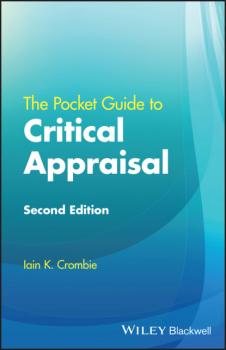ТОП просматриваемых книг сайта:
Iain K. Crombie
Список книг автора Iain K. CrombieАннотация
This second edition of the popular guide to critical appraisal is a fully updated revision of the previous edition. Written in the same easily accessible style, The Pocket Guide to Critical Appraisal now provides annotated checklists of the most common research designs. Consistent with recent developments in evidence-based medicine, these checklists distinguish between the risk of bias in the conduct of published studies and the value of the findings for healthcare delivery. Five new chapters have been added and the original chapters have been rewritten, making the new edition a complete and concise guide for the evaluation of research quality. In addition to the checklists, the book also: describes how to quickly identify the information needed for the critical appraisal provides simple explanations of statistical significance and the interpretation of confidence intervals reviews the major sources of bias and their impact on research findings explains how to summarise the risk of bias outlines the concept of certainty of evidence and how to calculate it identifies the challenges in assessing the value of research findings The Pocket Guide to Critical Appraisal is an essential guide for all health professions and students who read research papers and use their findings.
Аннотация
High-quality evidence is the foundation for effective treatment in medicine. As the vast amount of published medical evidence continues to grow, concerns about the quality of many studies are increasing. Evidence in Medicine is a much-needed resource that addresses the ‘medical misinformation mess’ by assessing the flaws in the research environment. This authoritative text identifies and summarises the many factors that have produced the current problems in medical research, including bias in randomised controlled trials, questionable research practices, falsified data, manipulated findings, and more. This volume brings together the findings from meta-research studies and systematic reviews to explore the quality of clinical trials and other medical research, explaining the character and consequences of poor-quality medical evidence using clear language and a wealth of supporting references. The text suggests planning strategies to transform the research process and provides an extensive list of the actions that could be taken by researchers, regulators, and other key stakeholders to address defects in medical evidence. This timely volume: Enables readers to select reliable studies and recognise misleading research Highlights the main types of biased and wasted studies Discusses how incentives in the research environment influence the quality of evidence Identifies the problems researchers need to guard against in their work Describes the scale of poor-quality research and explores why the problems are widespread Includes a summary of key findings on poor-quality research and a listing of proposed initiatives to improve research evidence Contains extensive citations to references, reviews, commentaries, and landmark studies Evidence in Medicine is required reading for all researchers who create evidence, funders and publishers of medical research, students who conduct their own research studies, and healthcare practitioners wanting to deliver high-quality, evidence-based care.




